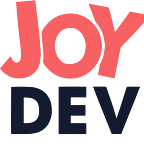Flutter vs React Native vs Ionic vs Unity: Best Tools for Cross-Platform Development
When a mobile app means to support your business potential, it’s not an additional feature anymore. It’s a necessity that has to be fulfilled. And the success of your app may help you to grow your business: to bring audience and profit. One of the ways to achieve this is to optimize the steps of your app development. In particular, you can use cross-platform development. Today we will tell you about the advantages of this type of development.
Why cross-platform development?
Cross-platform development allows creating iOS and Android apps simultaneously. You can reduce time, money, and resources by choosing it. Developers wouldn’t have to write different code for different platforms. This fact will help you to distribute your budget on other goals. Besides, with this type of development, you will be working in a safe and protected environment due to the cloud integration. You as well could release apps on Google Play and App Store.
Most popular cross-platform frameworks
The key advantage is that it allows the creation of mobile apps for iOS and Android platforms with one source code. Developers shouldn’t use Swift, Objective-C, Java, and Kotlin. Javascript (for React Native, Ionis, and Unity) and Dart (for Flutter) are used instead. This increases the speed of the development and positively affects the product MVP. The first version of the app can be released just in several months.
Flutter
This is SDK and framework for Dart. Dart is the development language created by Google. Dart and Flutter are usually used to create UI composed of widgets. SDK is supplied with a set of pre-installed widgets. You can apply them or create your own.
You can design a flexible UI and make it more accustomed for iOS/Android. A user won’t see any difference if you use proper widgets and animations.
The performance of Flutter is so high that its apps don’t differ from native apps. If you implement UI animation the performance is even higher. That is achieved by another approach to transitional interface code interpretation. Flutter is built in machine code.
How can you use Flutter: e-commerce projects, financial technologies, inner management apps, educational apps, online theatres.
React Native
That is the most preferred framework among other cross-platform tools. It is the framework with open-source code created by Facebook. It uses JavaScript and React library to create attractive UI from React components.
React Native doesn’t use HTML tags. The set of ready components is used instead of this, it compiles into native code with the help of React Native tools. You can use libraries like Redux, and the knowledge of JavaScript and React may help you to start working quickly.
The performance of React Native is also high. You can build a mobile app with some management elements with their own operational systems.
How can you use React Native: you can create food delivery services, start-ups, small fitness apps, inner apps for event managers.
Ionic
It allows developing apps by creating web apps (with HTML, JS, and CSS), wrapped by common native apps hosting webview in the hidden browser. It’s based on Angular JS, so the community is quite developed. It gives support if you have troubles with bugs and updates.
With Ionic, you can build mobile apps for iOS, Android, desktop, or web apps. Special container Cordova or Capacitor are used. They provide access to the device functions or API. UI works in webview and serves as the browser. Electron is applied in the desktop version.
If you use Ionic to develop a common app functional, its performance is as high as Flutter can provide. It uses a standard browser run-time environments and primitives, which help to reduce the size of the app.
How can you use Ionic: use it to develop restaurants menu catalogs, simple messengers booking apps, news platforms.
Unity
This framework is usually applied to create mobile games. Projects made on Unity can function on 25 different platforms. However, it can be used not only for games development but for projects with AR.
It’s simple and clear in use. The framework supports complicated and diverse designs, optimizes code and provides high performance. They are provided by Unity team that works on the rendering optimization for the entity of one-type objects.
To make the comparison clear we gathered all the information into the table.
In conclusion
Every framework is different by its advantages, so the choice depends on the project you work on. So, Ionic isn’t the best choice for apps with complicated graphic design and mobile games. Wrapping apps can sometimes lead to performance problems. The choice of React Native and Flutter depends on the type of the app, its goals, and its features. Unity is recommended to create games and apps with augmented reality.
Out JoyDev team has solid experience in cross-platform development based on these frameworks. We can help you to choose the best one for your project and tell you about all the difficulties. So if you are looking for a team, write to us, as your product needs a team of professionals!
